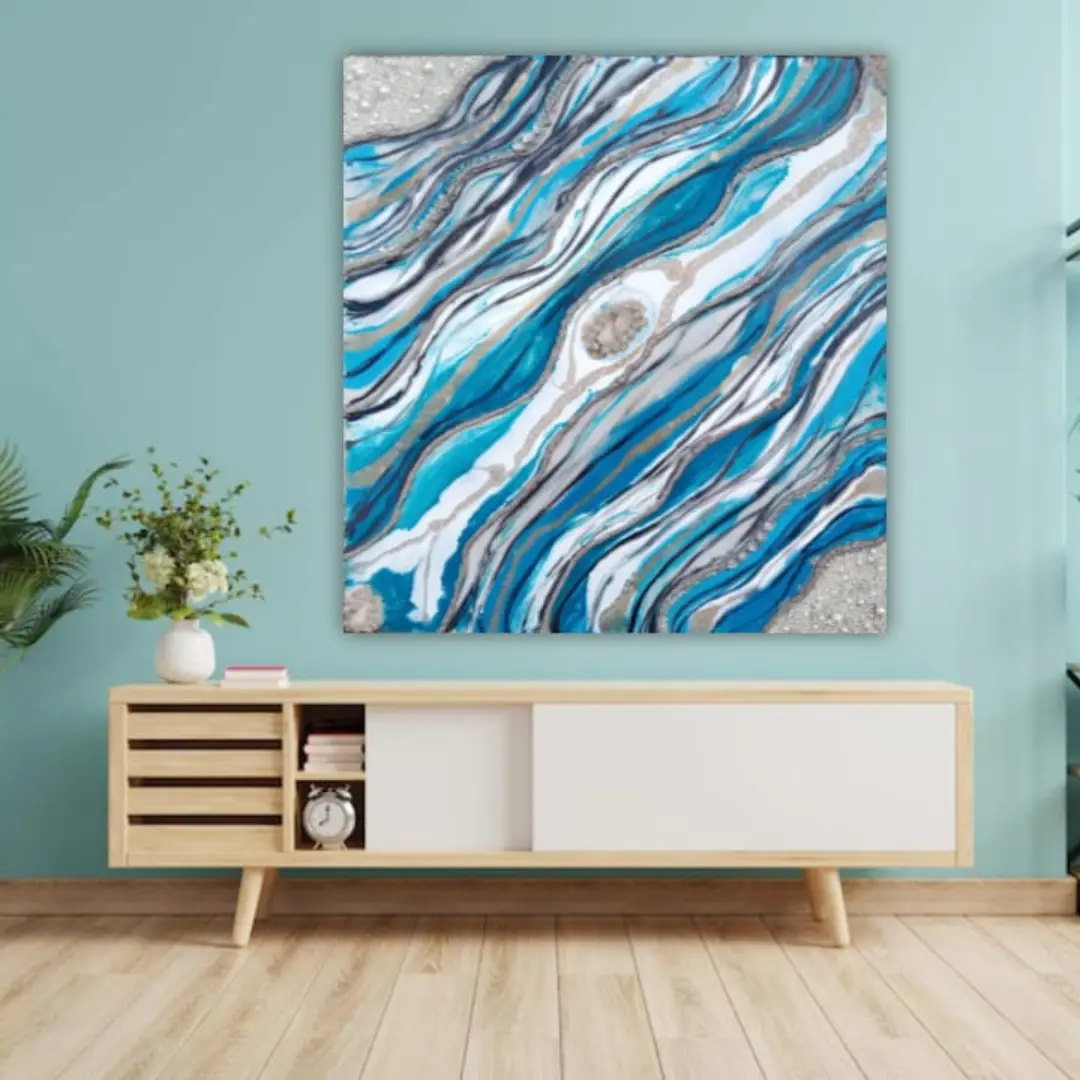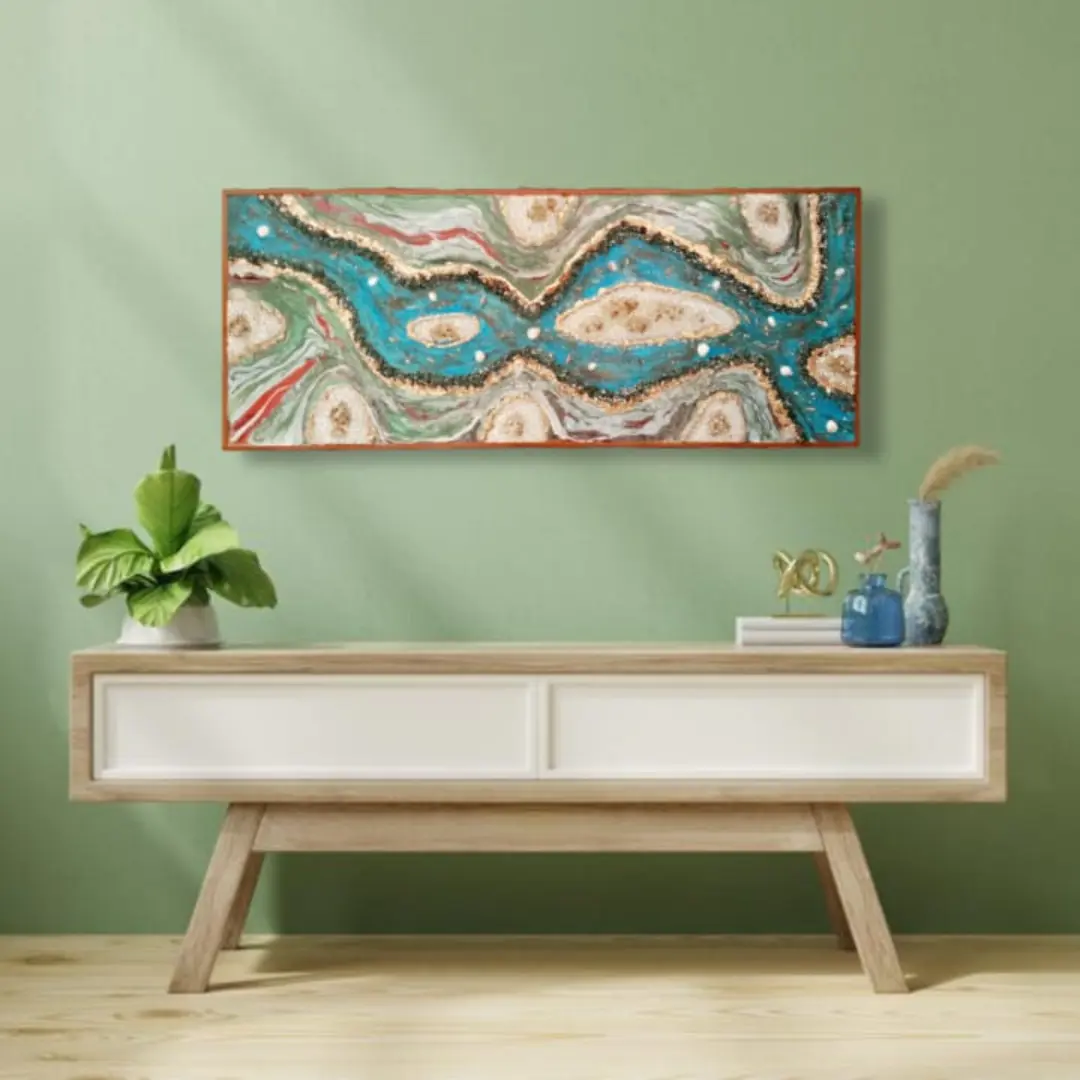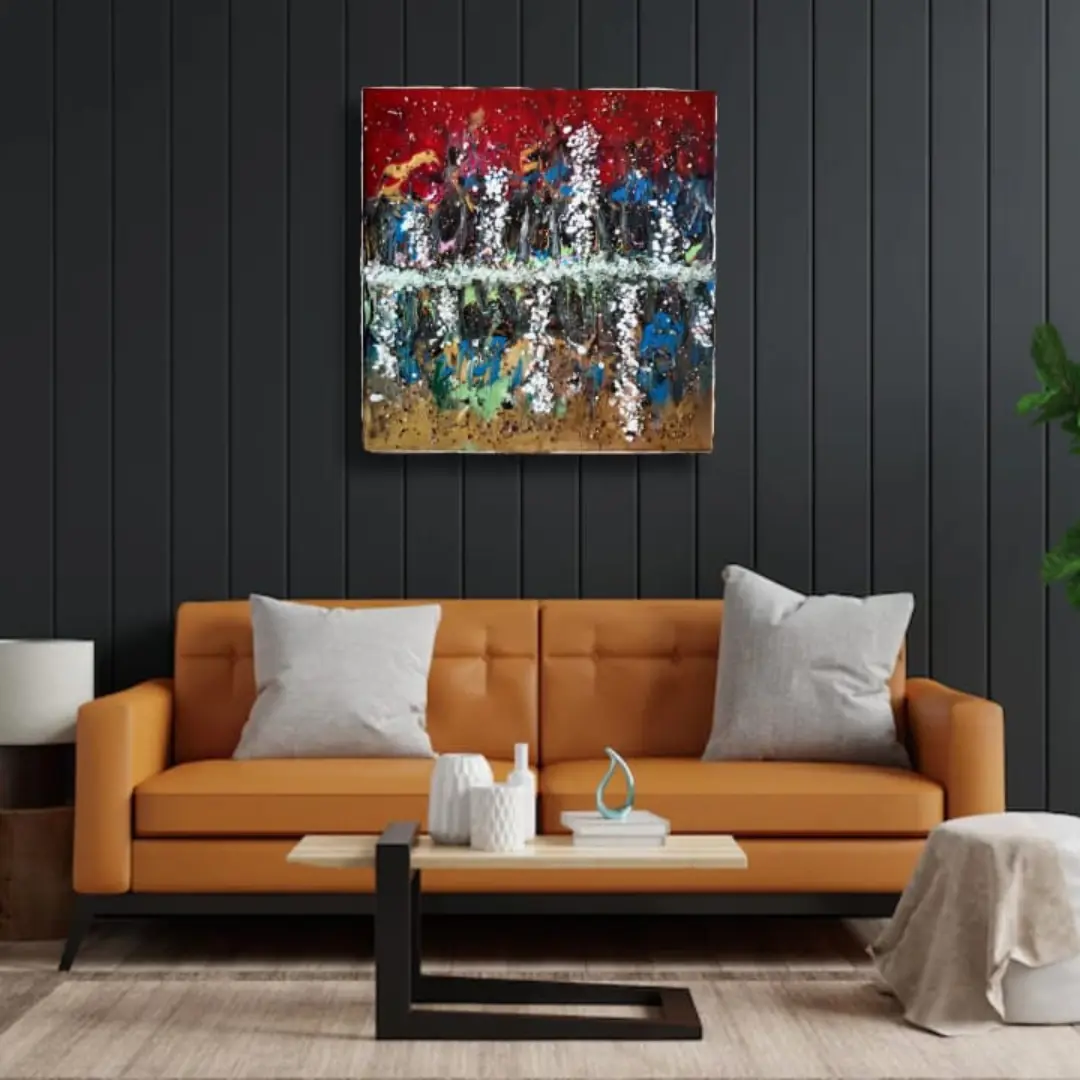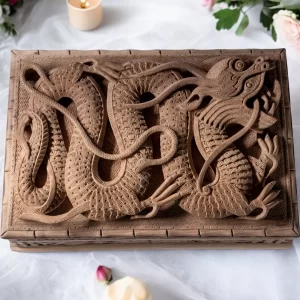* Process of Making Resin Art :
1. Preparation : Artists begin by selecting the base (such as wood, canvas, or molds) and materials (colors, pigments, objects).
2. Mixing : Two main components are used — epoxy resin and hardener, mixed in a precise ratio (often 1:1 or 2:1).
3. Adding Pigments : After mixing, pigments, dyes, or glitter are added to achieve the desired colors and effects.
4. Pouring and Manipulation : The mixture is poured onto the surface or mold, with artists using various tools to manipulate the resin to create different patterns (swirls, cells, layers).
5. Curing : The resin takes several hours to harden (typically 24-72 hours) depending on environmental conditions and resin type.
6. Finishing : Once cured, the artwork may be sanded or polished for a glossy finish.
* Lifespan of Resin Art :
Resin art is durable and long-lasting if properly cared for. When fully cured, resin pieces are resistant to moisture, UV rays, and scratching. However, prolonged exposure to direct sunlight can cause yellowing over time unless UV-resistant resin is used. Typically, resin artworks can last decades with minimal maintenance, retaining their gloss and color.
Handicraft
Resin Art
+ Free Shipping * Origin of Resin Art :
Resin art emerged from the use of synthetic resins developed in the mid-20th century. Epoxy resin, widely used in construction and industrial applications, began to be used in art due to its versatility. In the 1960s-70s, artists started experimenting with resin as a medium to create glossy, high-gloss finishes and encapsulate objects. Initially popular in Western countries, resin art has grown globally due to its aesthetic appeal.









Reviews
There are no reviews yet.